Pat McGrath on Her “Hyper-Minimal Major-ness” Creative Process
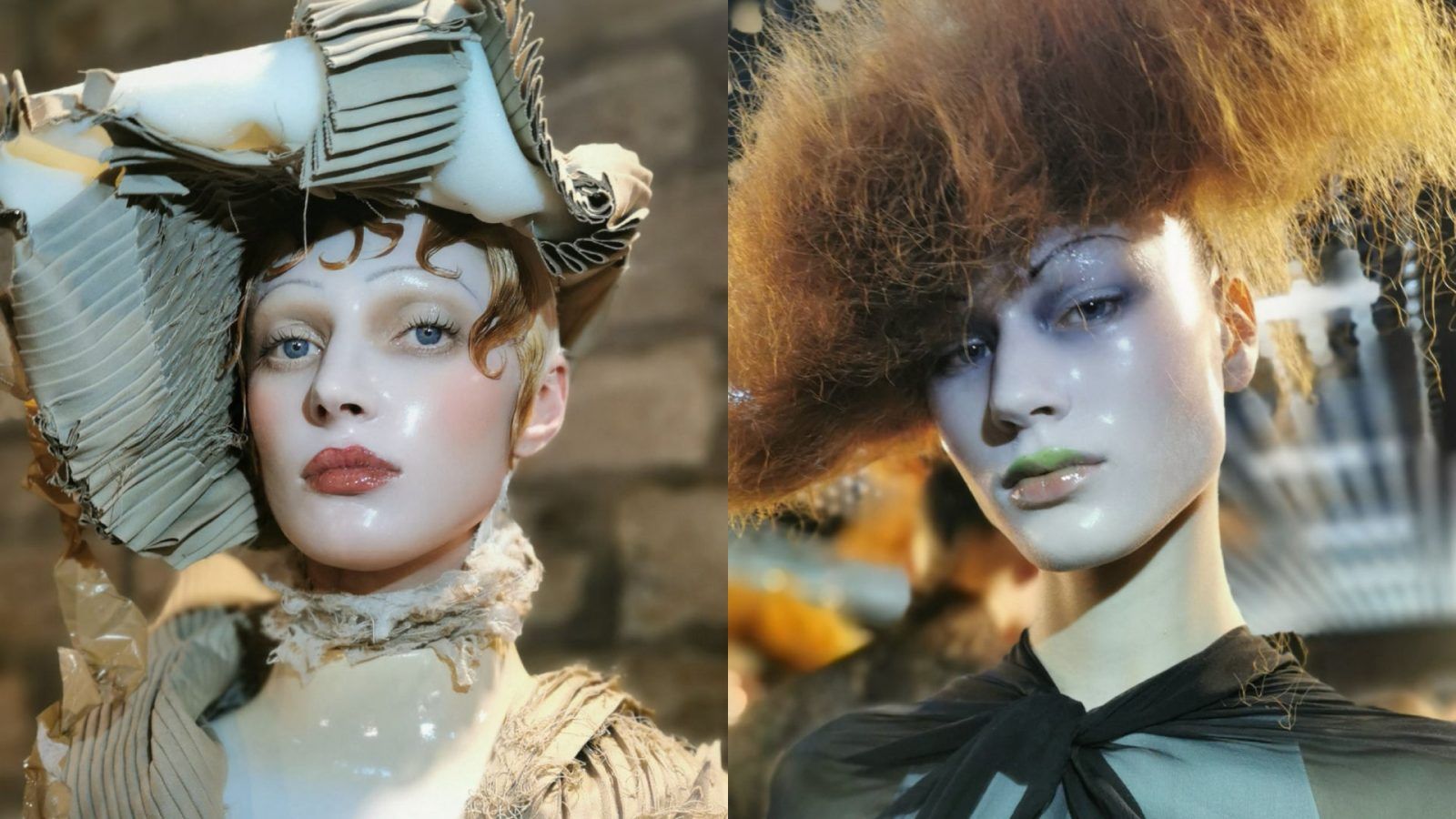

Pat McGrath proves she’s the world’s most influential celebrity make-up artist – yet again – when her recent look for the Maison Margiela runway show set social media ablaze. Here, Prestige takes a peek into her creative process and the artistry behind the iconic look that broke the Internet.
Delicate as porcelain dolls, and with a chilling, glassy beauty, the faces of the models at Maison Margiela’s Spring/Summer 2024 runway show in January had the world enthralled. A look never before seen, it set professionals and beauty enthusiasts alike in a frenzy.
Thousands of Instagram posts boasting the #porcelaindollmakeup hashtag attempt to recreate the look; while on TikTok, beauty enthusiasts paint themselves shiny to garner millions of views. Products were sold out based simply on public speculation of their role in creating the high gloss lustre. The “glass skin” look has also been sported by American rapper Cardi B on the cover of her latest single, Enough (Miami).

It certainly is the viral make-up trend of the moment, but the woman behind it is no mere flash-in-the-pan sensation.
The 54-old Pat McGrath – and that is Dame McGrath, since she became the first make-up artist to be bestowed the honour in 2020 by the late Queen Elizabeth II – is known by those in the industry as “Mother” out of both affection and reverence.
Through over 35 years of creating looks for runway shows of prestigious fashion houses, cover shoots and the red carpet, the prolific artist has transformed a behind-the-scenes craft into a limelight-stealing art form. Cast your mind back to the feathered lashes that adorned models at Valentino’s Spring/Summer 2019 Couture show; or the crystal-encrusted faces at Givenchy’s Spring/Summer 2014 collection. Or, musician Lil Nas X’s transformation into a silver cat, embellished with 5,000 stones and over 200,000 flat-back crystals, at the Met Gala last year.
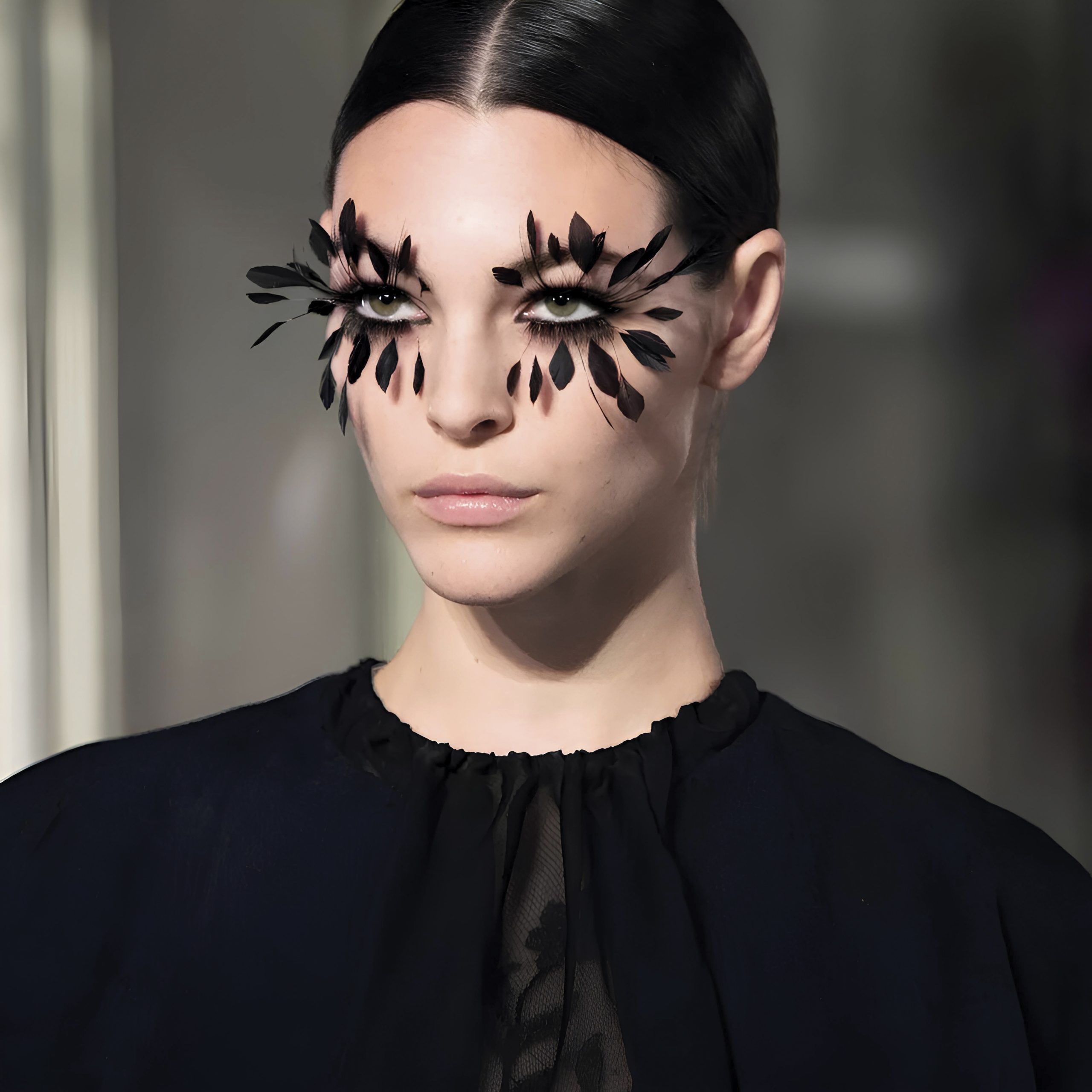
Where other make-up artists are preoccupied with hiding blemishes and heightening features, McGrath goes beyond the concerns of looking pretty. The face to her is a canvas for her art – bold, otherworldly, and even unnerving. They are artistic statements designed to make us think, feel, and question our perception of beauty. As McGrath says in an email interview with Prestige Singapore, “Make-up is a form of artistic expression, not merely beautification.”
McGrath’s artistry lies not just in her creativity and technical prowess. Her collaborations with luxury maisons such as Dior, Alexander McQueen, and Valentino demonstrate a deep understanding of each designer’s vision. In particular, her longstanding partnership with John Galliano – the creative director of Maison Margiela – highlights her ability to express, and even augment, the fashion maestro’s artistic point of view. The technical precision behind the ethereal luminosity of the porcelain look mirrors the craftsmanship evident in the Spring/Summer 2024 Artisanal Collection, for which Galliano pushed technique to the limit to create exceptional pieces.
According to McGrath, the make-up further tells a story. A representation of nostalgia and purity, yet with a haunting quality, the hyper-feminine yet subversively seductive doll-like faces melded juxtaposed elements in Galliano’s exploration of dressing as a ritual that involves texture and transformation. She says, “It’s these contrasting ideas, and the interplay of innocence and modernity, that speak to the heart of the collection – mirroring Galliano’s narrative and bringing a new dimension to the aesthetic conversation on the runway.”
The depth of McGrath’s work also comes from her rich sources of inspiration. From the multifaceted shine of gemstones to the textures and patterns of fabric and textiles, from fine art to street styles, social media to past cultures, everything and anything could spark her imagination. “I see ideas for make-up and colour everywhere I look,” she says.
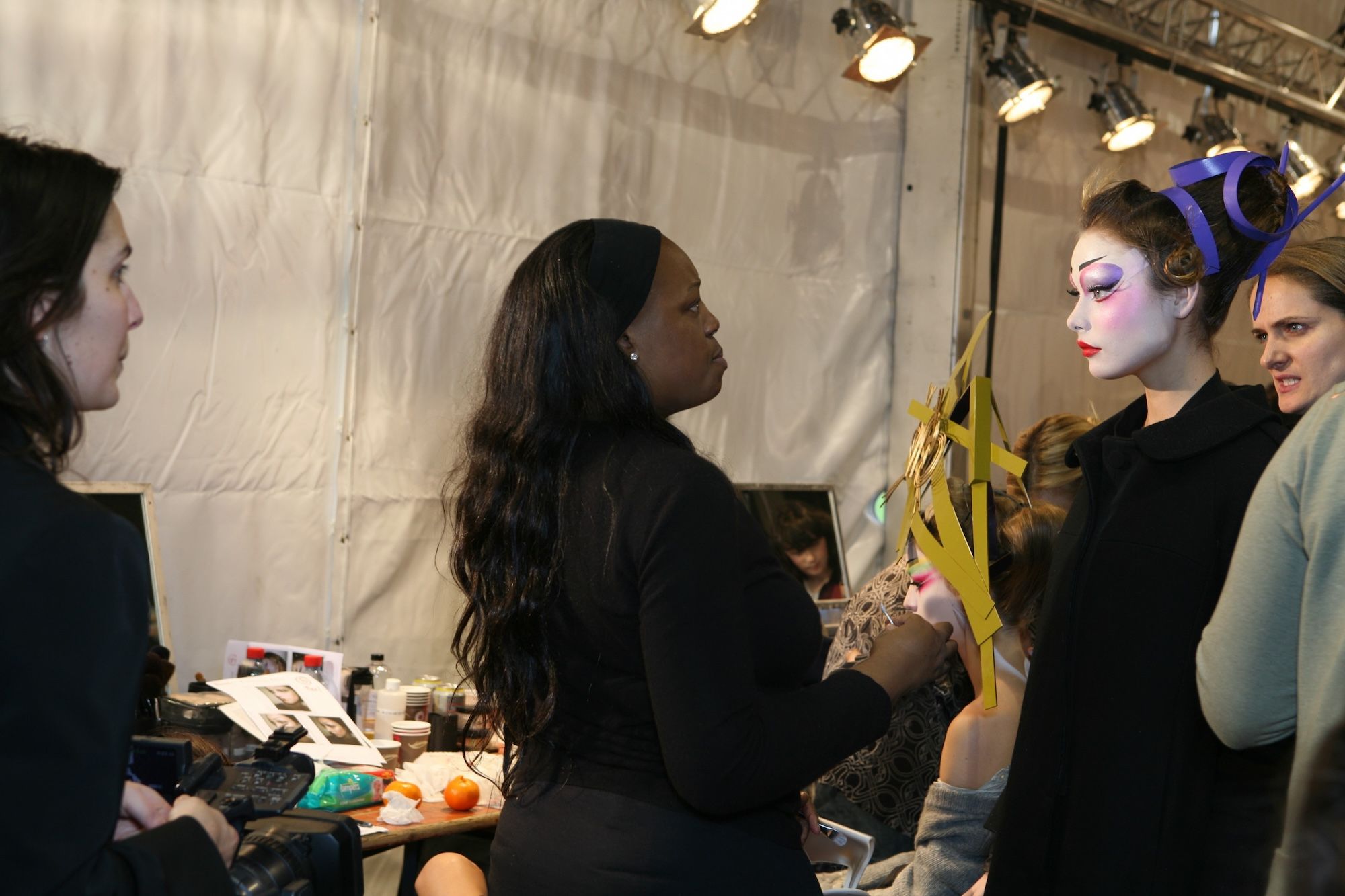
And these, the Jamaica-born Briton interprets through her own perspective: as one who witnessed the transformative power of make-up since childhood, through her mother; as a young black girl who used cocoa powder as foundation when she couldn’t find a shade that suited her skin tone; as a naturally talented artist with a larger-than-life personality.
Yet it is not all over-the-top flamboyance either. McGrath is also known for what she calls “hyper-minimal major-ness”: miniscule details that make an impactful statement. Think Givenchy’s Spring/Summer 2012 water-inspired collection, for which McGrath glued just half a sequin along the centre of the top and bottom lashes.
Whether poetically quiet or fantastically loud, McGrath’s looks are trend-driving and market-influencing. The Gold 001, a gold pigment and the first product of her eponymous make-up line Pat McGrath Labs, sold out in 366 seconds after it made its debut in the Prada Spring/Summer 2016 show. Pat McGrath Labs also became a unicorn within three years of its launch.
“Make-up’s ephemeral nature is part of its allure. Each look is a temporary work of art, and it’s that impermanence that pushes me to be bold and fearless in my artistry,” she opines. “My goal is to evoke emotions that resonate beyond the moment, leaving a lasting impression in memories and in photographs.”
However fleetingly each look might stay on the faces she transforms, behind each are months’ – sometimes even years’ – worth of R&D. The glazed, almost reflective skin of Maison Margiela’s runway look took years of trial and error to achieve. A complex process that starts with dermaplaning, where the skin is exfoliated and facial hair removed to create a smooth canvas. It then requires expert air-brush application of a concoction of gel masks as well as products from her eponymous make-up line.
Beyond looks of the moment, McGrath’s influence reaches far to touch the lives of many. As a Jamaica-born Briton from a working-class family in Northampton who became the most influential make-up artist of our generation, she has inspired many.
Her mother – with whom she analysed make-up looks of Old Hollywood film stars, identifying which ones had inspired fashion designers during the ’60s and ’70s – might have given her an early exposure. But it was through experimentation and a thirst for knowledge that she honed her skills.
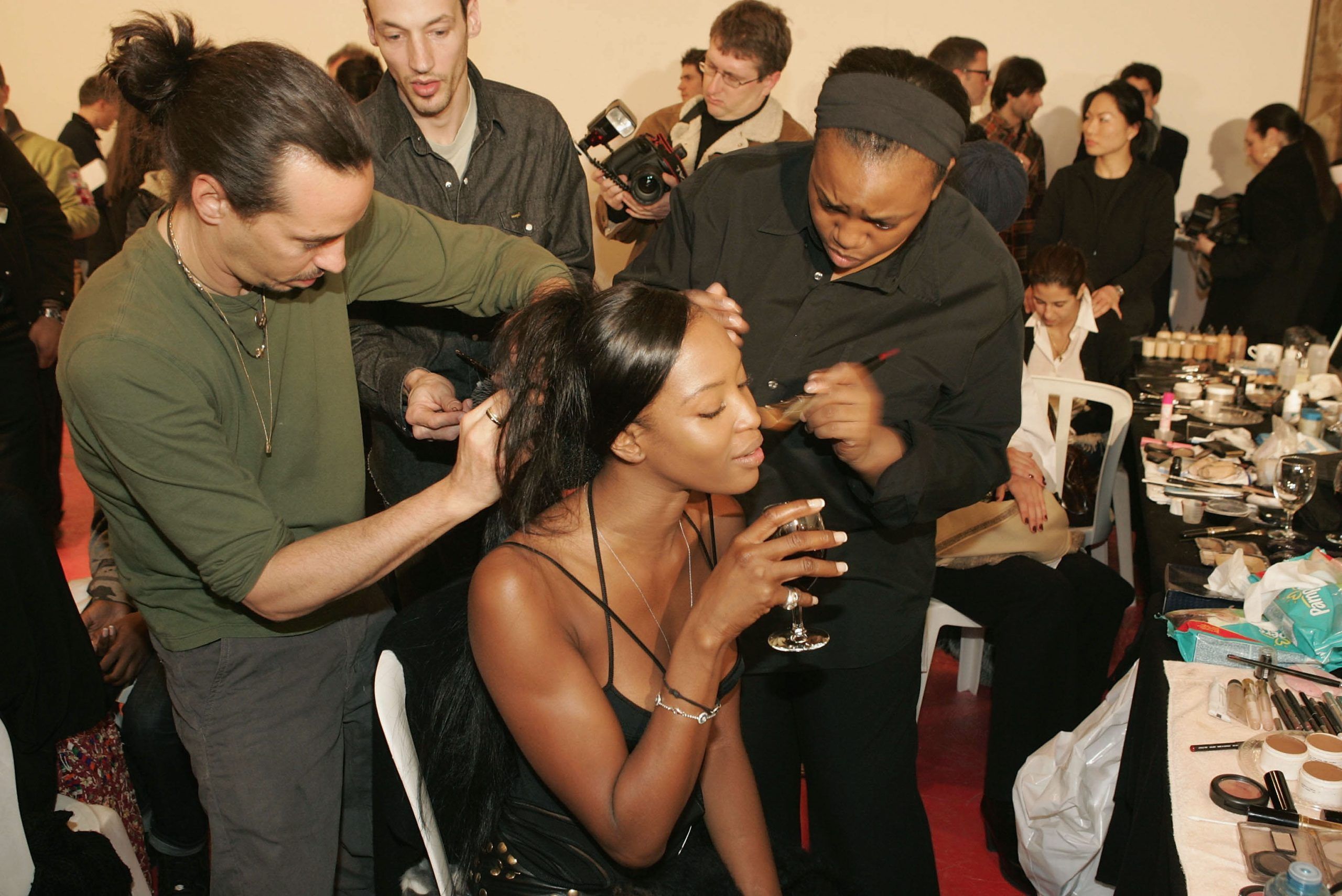
McGrath landed her first job as a make-up artist by accident – while chasing English pop band Spandau Ballet outside a radio station. The bold lipstick and vibrant colours on the teenager’s face drew the attention of radio presenter Janice Long, and she invited McGrath to do her make-up. Then, in the early 1990s, McGrath met Edward Enninful – the Ghanaian-born British fashion director of youth-oriented publication i-D magazine who was appointed at the age of just 18. Together, the two young renegades made waves. In the grunge era when make-up was minimal, McGrath’s adventurous use of colours in Enniful’s striking photospreads further set her apart from her peers.
McGrath would go on to have many other hugely influential collaborations in her career, from designer Miuccia Prada and photographer Steven Meisel. Among her circle of friends are the likes of Cara Delevingne, Bella Hadid, and Taylor Swift. Despite her untouchable status as the reigning queen of celebrity make-up, she does not distance herself from the world of her youth.
She admits that experiencing the world’s reaction to the glass skin look has been truly extraordinary. “I’ll forever treasure how much people love it and have taken my look and made it their own, sharing countless variations on social media,” she says.
Through her social media accounts, she puts the spotlight on fellow professional artists and everyday beauty lovers, encouraging one and all to experiment, and empowering them through her priceless endorsement. Her inclusive approach to promoting beauty has also seen her breaking down barriers to work with people of different skin colour, body types and gender classification – such as African-American body-positive model Paloma Elsesser; Miss Fame, a drag performer who eventually scored a contract with L’Oreal, and gender fluid model Kurtis Dam-Mikkelsen.
Just as her make-up can spark conversation, and even ignite debate, McGrath’s true power lies in her ability to challenge conventions – and uplift others as she paints the world a shade more beautiful.
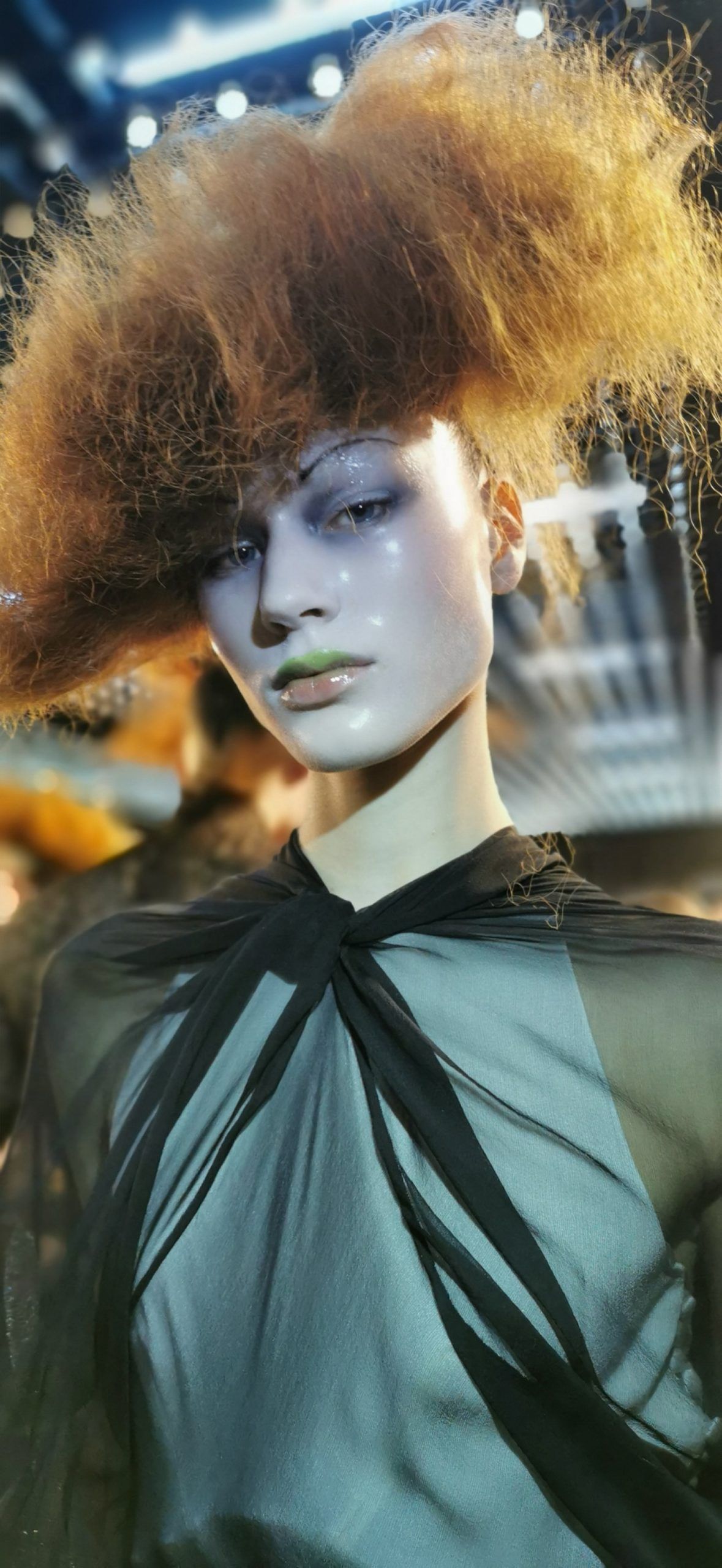
McGrath uses a variety of techniques to achieve Maison Margiela’s porcelain-doll look, the effect of which her team is currently distilling into one product. In the meantime, here’s how it can be done using cosmetics from Pat McGrath Labs.
For the eyebrows:
Bleach and secure with water-based adhesive then use the Mothership I: Subliminal eyeshadow palette to draw 1930’s-inspired brows.
For the doll-like flush:
Use Divine Blush: Legendary Glow Colour Balm on the cheeks.
For the lips:
A sheer stain is delicately applied using MatteTrance Lipstick in Guinevere, layered for opacity, and finished with Lust: Gloss in Nude Negligee for a glass-like shine.
This story first appeared on Prestige Singapore.